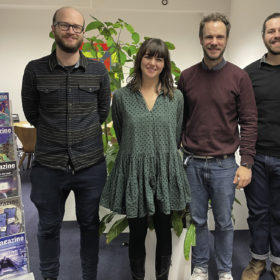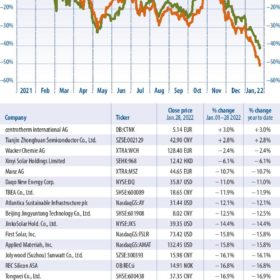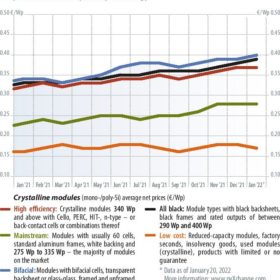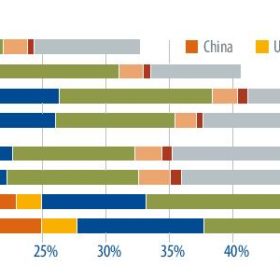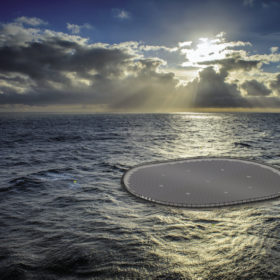New frontiers
There was a time when the solar industry would pile into a new or fast-growing market – generally on the back of an attractive feed-in tariff scheme. And while those days are not entirely in the past, global efforts to decarbonize not only electricity supply but a broader range of economic sectors are opening up new opportunities for PV.
Between a rock and a hard place
In the month of January, the Invesco Solar ETF, an ETF that tracks the MAC Global Solar Energy Index, underperformed relative to the S&P 500 and Dow Jones Industrial. Delays to the Build Back Better Act in the United States, coupled with ongoing concerns around availability and the PV supply chain, led to a significant pull-back, writes Jesse Pichel of ROTH Capital Partners.
Scarcity is the new norm
Scarce goods, delays, organizing, improvising – our fellow citizens from the former eastern bloc know these terms all too well. The centrally planned socialist economies were characterized by shortages of almost everything. Not until the fall of the Berlin Wall at the end of the 1980s did citizens of the bloc get a new perspective. Suddenly, everything was supposed to be available in abundance. As a result, the values of thrift, stockpiling and repairing, instead of buying new things, were increasingly abandoned. With PV modules in short supply, these values may need to make a comeback, writes Martin Schachinger of pvXchange.
Keeping up with growing demand
Despite a few recent bumps in the road, the outlook is bright for the solar industry in 2022 and beyond. A growing list of countries are making commitments to net-zero carbon emissions, and solar energy is central to many of their strategies for reaching this goal. InfoLink analyst Amy Fang sheds light on the growing demand for PV around the world, and the latest price trends and technology developments that will shape the market in 2022.
Celebrating solar in MENA
More than 200 guests celebrated the Middle East Solar Association’s (MESIA) 10th Annual Awards during Abu Dhabi Sustainability Week. The event recognized an industry that is not only transforming the regional market, but thriving in spite of the pandemic and supply chain challenges. pv magazine’s Felicia Jackson reports from Abu Dhabi, which was shown live online on the Middle East Solar Energy Digital Channels and Solarabic.
Build back later
After multiple rounds of slashing the total cost of the Build Back Better bill, US senators remain locked in negotiations. Democratic Senator Joe Manchin (West Virginia) voted against an earlier proposal, shocking many, and has now said he will reopen negotiations “starting from scratch.” pv magazine USA’s Ryan Kennedy reports.
Solar support in coal country
In the United States, passage of the Build Back Better Act would extend the solar Investment Tax Credit and offer other clean energy initiatives that would boost the renewable energy momentum already underway in Senator Joe Manchin’s home state of West Virginia. This is good news for the state and is resulting in unlikely allies, reports pv magazine USA senior editor Anne Fischer.
After the FITs
Japan’s PV sector remains the third largest in the world in terms of installed capacity, at some 78.5GW, making it one of the leading global PV marketplaces in the last decade. But as the world races to install more solar, it is one of the few markets in recent years that has charted a decline in new installs. An approach involving numerous government agencies is looking to restart the market, and not purely based on feed-in-tariffs (FITs), says Izumi Kaizuka, the director and principal analyst at RTS Corp.
The coast is clear
There are literal oceans of space for floating PV (FPV), beyond the first applications on lakes, reservoirs and hydro-electric dams. For countries where land is at a premium, such as the Netherlands, Singapore and Japan, offshore FPV is of particular interest. Of course, unlike a reservoir, the sea is rarely still. Thankfully FPV’s growth has also brought technological innovation and maturity with it, meaning the coast could now be clear for solar to head offshore.
Buyer power in a tight PV module market
Material shortages, trade restrictions, and shipping bottlenecks create challenges for PV module buyers, but the good news is that there are steps to take to ensure quality supply in a timely fashion. PVEL CEO Jenya Meydbray takes us through best practice for module buyers in the current market climate.
